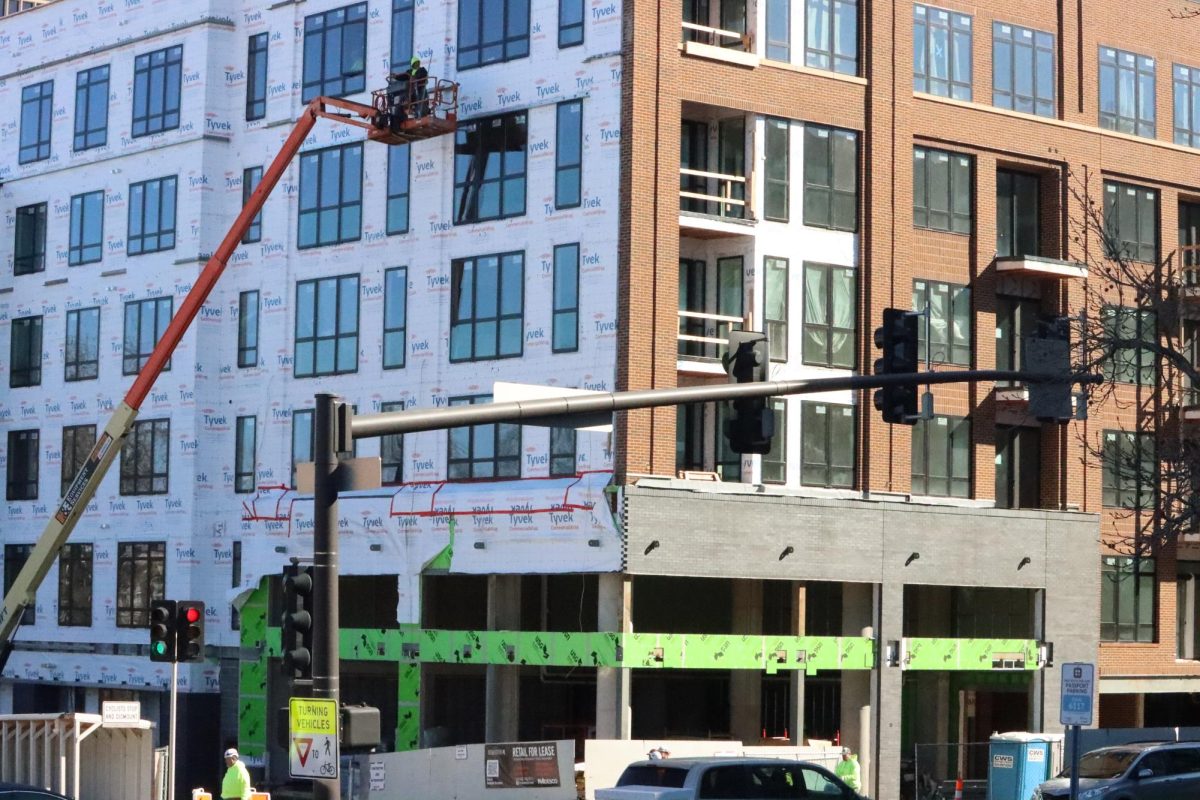For years, St. Louis residents have heard about how St. Louis tops national crime lists and is one of the most dangerous cities. In the recent Forbes ratings of America’s Most Dangerous Cities, St. Louis was not even listed since the statistics took into account surrounding suburbs of St. Louis, not just the City of St. Louis alone.
“St. Louis is a rather safe midwestern city as it has strong community ties to various organizations that allow for group cohesive settings such as the ‘Taste of St. Louis,†US/World History teacher Kurtis Werner said.
In 2000, the Strategic Approaches to Community Safety Initiative, a program instituted by the National Institute of Justice Program, over half of the homicides committed in St. Louis are concentrated in just 12 of the 79 neighborhoods in St. Louis.
“It is the way it is with concentrated crime, since people have their boundaries,†Werner said. “This is the reason why people started to move out into the suburbs.â€
Though, for Saint Louis, crime in some areas is not as prevalent as in others, some overlying reasons have led to tremendous amounts of crime in some parts of St. Louis.  One factor that commonly leads to crime seems stems from poverty.
“Much of crime is desperate, as to be desperate to feed their family,†psychologist Jane Darger said.
In times of poverty, people often will make impulsive, dangerous attempts to gain material goods for their benefit or others’.
In speaking of crime in St. Louis City, Alderman Samuel L. Moore of Ward IV said, “Until all get jobs, or some kind of material upswing, it will remain the same; hopefully it doesn’t get worse.â€
One example of crime and violence are gangs. Deborah Prothrow-Stith, Associate Dean and Professor of Public Health Practice at the Harvard School of Public Health said that for “adolescent males in impoverished urban neighborhoods, gangs may be one of the few avenues available for meeting their emotional needs.â€
Aggression and violence within gangs, therefore, is a way to meet some emotional needs within groups.  According to Dr. Prothrow-Stith, a gang member feels like part of a community, or even like a member of a family when he or she participates in a gang.
In addition to gangs, there are perhaps other links that help allow crime to continue.
“We still have relaxed laws, such as carrying your gun in your car,†Moore said.
Moore believes that police and citizens working together against crime are not as effective as they can be.
According to Moore, one of the reasons that citizens of the North side of St. Louis don’t have much trust in their police force is that there isn’t an equal number of police guarding them in comparison to similar amounts of people per area.
There are “five or 10 officers guarding us at night, and our counterparts and my colleagues have 25 to 30 officers guarding them, an act of unfairness. This makes us feel like second class citizens in this city of St. Louis,†Moore said.
No one from the St. Louis Police Department responded to the Globe’s calls.
Building more trust between citizens and the police will help allow greater unity, and add to the ability to combat crime in their area.
Werner said that crime in St. Louis is related to the dysfunctional St. Louis City School District, which is under the direction of the state right now.
“Students are receiving an inadequate education. Therefore, they are lapsing to other activities such as crime,†Werner said.
Although there is some difference in money spent per student in St. Louis City and Clayton, it is minor. This proves that there are other factors that are helping lead to a decline in education in St. Louis City, other than the fund situation of the school.
Although it has been thought that the limitation of funds for St. Louis City is the reason that has caused a decline in education, this is not the case. According to the Missouri Department of Elementary and Secondary Education, the amount of money spent per student in St. Louis City is $15,549, while the amount of money spent per student in Clayton is $16,657.
Darger feels that education is critical in a person’s development and is a factor that can either sway or dissuade people from crime.
“Education is a freedom, gives you options, opening doors for the community, opening another world out there,†Darger said.
Moore feels that part of the failure in education in St. Louis City is related to busing.
“If we didn’t have busing we could take that money to buy those yellow buses with busing, all those people driving those buses, and put in that money in an education system right here in our neighborhood,†Moore said. “To get our teachers back to par and bring those students here.â€
Darger also stated that another factor in crime is how the quality of family relationships has deteriorated in this industrialized age.
“Children are not being supervised, parents are not available, emotionally or physically,†Darger said. “Children are without someone who is invested in a child, emotionally or physically to help them grow up.â€
Moore agreed that lack of parental supervision was a problem.
“We got to teach our children much better,†Moore said. “Children are having children; a child can’t raise a child.â€
Since not enough physical one-on-one supervision is available in crime-ridden areas, there have been recent attempts to limit violence in St. Louis, such as increasing the police force and using new tactics to conquer crime. One such tactic is video surveillance, a technology that has been attributed to New York City’s drop in crime and violence in recent years.
“Surveillance goes a long way (speaking of ways to limit crime), the technology is there, but the financial resources are not,†Werner said.
In Moore’s ward, there are 14,000 people, and he said there are over 200 drug houses.
“The drug dealers come to me and ask me why I am snitching on them to the police that they sell drugs at the house,†Moore said. “How should that make me feel? Should I continue to do this or never give the information?â€
This demonstrates the power and influence of people who are involved in crime such as drug dealers. They can create fear for legislators and citizens trying to advance the cause against crime.
Strong police enforcement in a community helps deter people’s desire to engage crimes. As shown by the report from the Consent to Search Program, building strong communities also is a factor that can help decrease crime. According to Darger, crime is the result of the decrease in the quality of family relationships and also that that education can be become a positive factor in leading someone away from a life of crime.
“We can do better, never give up, we have to work together,†Moore said.






